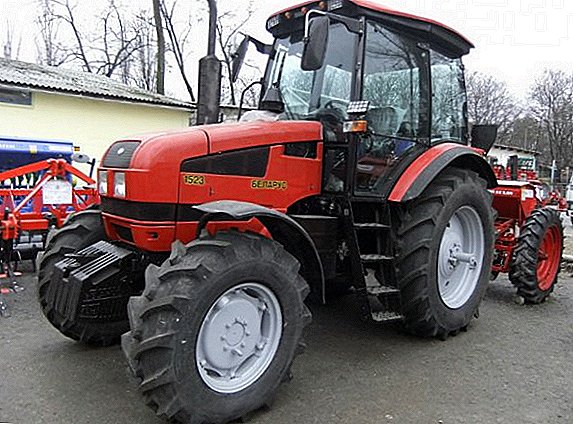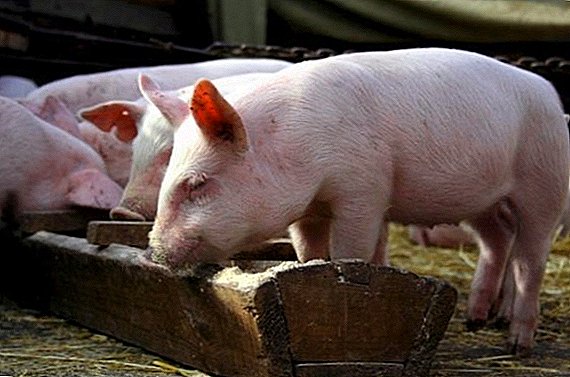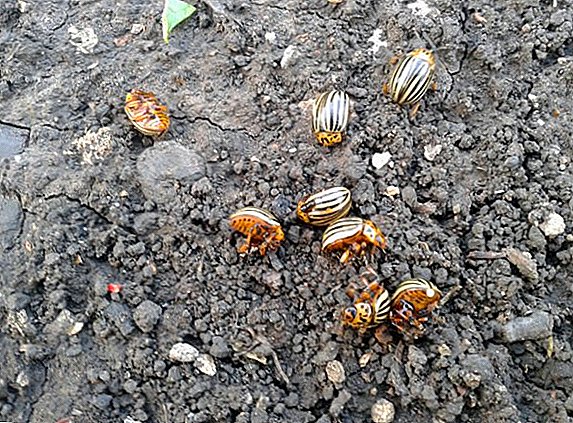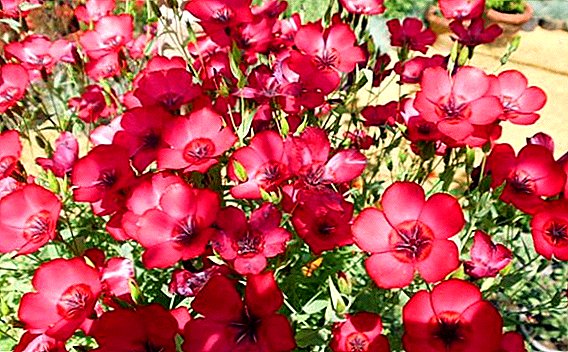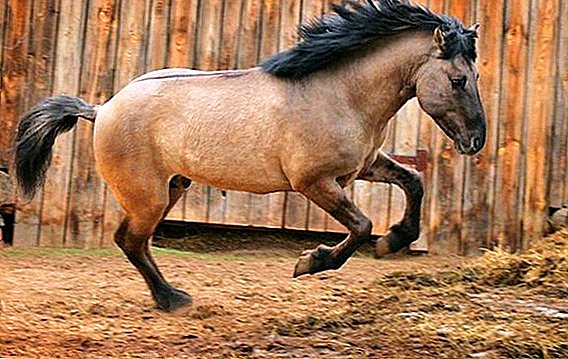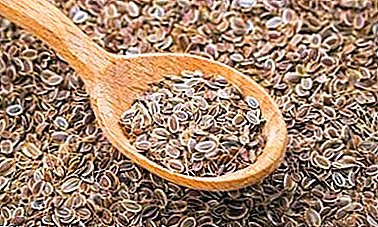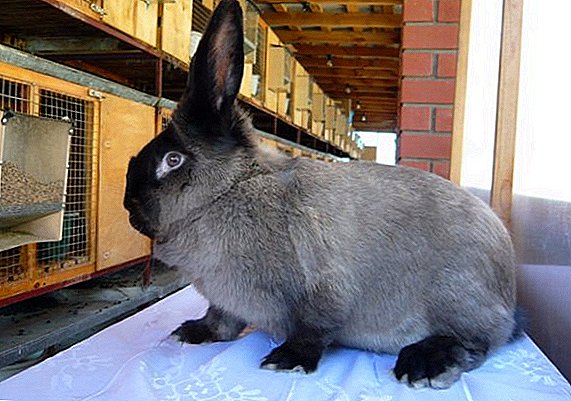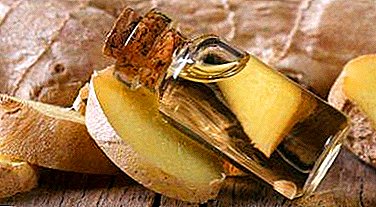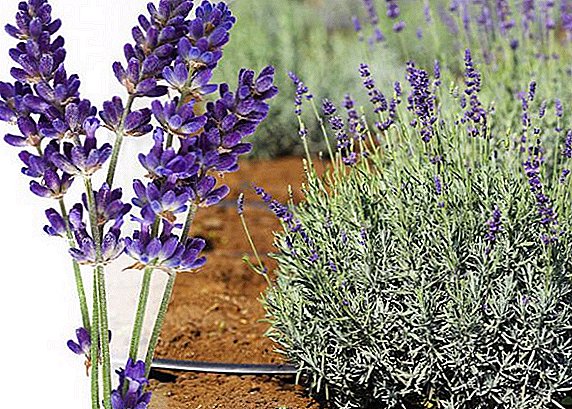 Lavender fits well with any floral garden composition. In addition to aesthetic pleasure, it can also bring practical benefits: the plant is dried and used for household and medicinal purposes.
Lavender fits well with any floral garden composition. In addition to aesthetic pleasure, it can also bring practical benefits: the plant is dried and used for household and medicinal purposes.
Although it is a heat-loving plant, it can be grown even in cold climates, the main thing is to choose the right variety and create all conditions for growth.
Cold-resistant lavender varieties
In total there are more than 20 types of lavender. Of these, for growing in a cold climate, English, or narrow-leaved lavender is suitable. She is able to withstand a shelter at temperatures up to -35 ° C. The shrub reaches up to 70 cm and has a spherical shape with a multitude of flowering stems. Flowering falls on the first days of summer.
Did you know? In ancient Rome, lavender was added to the bath for freshness and aroma. Actually, the name of the plant comes from the Latin "lava"what means "wash".This cold-resistant species became the basis for breeding a variety of varieties:
- "Munstead" - a low shrub up to 40 cm in size is resistant to windy weather, has rich blue flowers;
- "Hidcote" - has the darkest flowers, shrub size from 30 to 60 cm and 1 m in diameter, blooms all summer;
- "Alba" - up to 50 cm in size, has white inflorescences;
- "Rosea" - up to 40 cm, blooms all summer pink;
- "Beechwood" - has a soft blue bloom in the first two months of summer, up to a meter in height.
- "Buena vista" - blooms twice a year - in spring and autumn, up to 60 cm in size, a two-colored plant (blue flowers in blue cups).





Learn how to grow narrow-leaved lavender on your site.
There is also a French lavender hybrid, which is also resistant to cold. You can learn it by long stems and large flowering spikelets.
Growing seedlings
Lavender can be grown both by sowing and by cutting. The latter is more efficient and faster. In addition, it can be done at any time of the year - lavender is unpretentious to life in pots, it will calmly take root at room temperature.
You can do it like this:
- Lower the cuttings into loose soil.
- Cover future shrubs with a wrap.
- Water gradually every 4 days. Do not allow dry land.
- When the seedlings take root, and grow at least twice, it can be transplanted into open ground. But do not do this before spring.



Important! You can not plant a plant in places of stagnation of water, waterlogging and places where high groundwater - this will lead to his death.There will be more trouble with seeds - first they need to undergo stratification, which we will discuss later. After sowing the seeds in the box with the ground, they need to be watered, covered with foil and about a month to keep in a room where the temperature does not rise above +5 ° C. After such a cold exposure, the container is transferred to a warmer place (from + 10 ° C) in order to see the shoots more quickly.
We advise you to find out why seed stratification is necessary.
You can also make seedlings a way to create a slider. In the spring, the lower branch of the bush should be carefully bent and well prikopat ground. In a month, roots should form on it. Further the branch is dug out and lands on a desirable place.
For planting cuttings and sowing lavender need to prepare the container and the ground:
- you can grow the plant in boxes, and after it reaches 10 cm, each sprout transplanted separately in pots or plastic cups;
- the soil is suitable on a sandy basis, it must be disinfected with a weak solution of potassium permanganate, after a couple of days after which the plant can be planted;
- lavender does not like abundant watering, but the soil should not dry out;
- It is best to keep the container with the plant at a temperature of +5 ° C, until the stems are stronger.
 In the open ground, the plant is already beginning to get used to the change in weather and temperature. Therefore, it does not need a separate hardening procedure.
In the open ground, the plant is already beginning to get used to the change in weather and temperature. Therefore, it does not need a separate hardening procedure.Transplanting seedlings to a permanent place
Frost-resistant lavender varieties begin to be transplanted into the open ground since April, the main thing is to choose a period with the most stable weather so that the shoots do not die. They immediately begin to get used to external conditions and adapt to them. The earth should be fertile, with low acidity and friable - lavender does not like dense soil. Landing should be clear and well ventilated.
Important! The distance between the bushes should be equal to their approximate value - then the lavender will bloom luxuriantly and densely.
Is it possible to sow seeds directly in open ground
Before planting, the seeds must undergo stratification - endurance and hardening. There are two options for this process:
- at the end of autumn they are sown directly in open ground.
- before sowing, they mix the seeds in a box or pot with a handful of river sand, put it in an airtight container and refrigerate for two months. At the end of winter, sow lavender in tara.
 Lavender Seed Stratification Doing this is necessary so that the plant appears faster and grows better. The first variant of stratification cannot be carried out in Siberia, only a mild climate is suitable for it.
Lavender Seed Stratification Doing this is necessary so that the plant appears faster and grows better. The first variant of stratification cannot be carried out in Siberia, only a mild climate is suitable for it.We advise you to familiarize yourself with the secrets of growing lavender at home and in the open field.
How to care
To get beautiful flowering shrubs of lavender, you need to take care of it from time to time. Complex care is simple: watering, nutrition, circumcision. It is also important to prepare shrubs for wintering.
Soil care
Soil ventilation is the main condition for normal plant development. Therefore, after planting, it will be necessary to systematically loosen the soil from the weeds. It should be planted in a moist soil and water it as it dries, as excess water will lead to rotting.
It is better to fertilize with mixtures on potassium preparations - the plant does not tolerate nitrogen. If the earth is fertile, then additional feeding is not needed. If not, then add the mixture to spring and summer before flowering.
Pruning
There are several opinions about pruning bush stems:
- not to do this at all, as the numerous stems will protect the plant from the cold;
- prune non-lumbering twigs in autumn leaving hemp up to 2 cm.
Did you know? In the Middle Ages, lavender was considered a plant that could scare away witches and even the devil.
 If, however, to cut more than it should be, the bush will die. Therefore, it is better to approach this issue as follows:
If, however, to cut more than it should be, the bush will die. Therefore, it is better to approach this issue as follows:- after the spikelets wither, they can be cut a couple of centimeters;
- at the end of the summer, trim the shrub a second time, more globally, without touching the woody part, and leaving small green shoots above it.
Lavender and its essential oil are widely used in traditional medicine and cosmetology.
Shelter
Before winter, this procedure is required. To cover the lavender fit burlap or agrofibre. Additional material will be conifer branches. It is worth avoiding composting - it is likely that lavender will rot with it rather than protect it from the cold.
Use in group landings
Lavender bushes are universal in combination with other plants. Blue and purple flowers can shade white, yellow, pink - daylilies, valerian, chubushnik, echinacea. Lavender has a strong smell, so choose it not such odorous neighbors, that the flavors do not mix and become unpleasant. You can plant it next to mint, basil, fennel, rosemary. Also, shrubs can decorate any territory by themselves - blue balls will highlight the paths, the entrance to the house, the terrace.  So, it is possible to grow lavender in Siberia if you choose a frost-resistant variety. With proper care, the bushes will bloom within a year after planting in the open ground and will smell almost all summer.
So, it is possible to grow lavender in Siberia if you choose a frost-resistant variety. With proper care, the bushes will bloom within a year after planting in the open ground and will smell almost all summer.
Reviews




